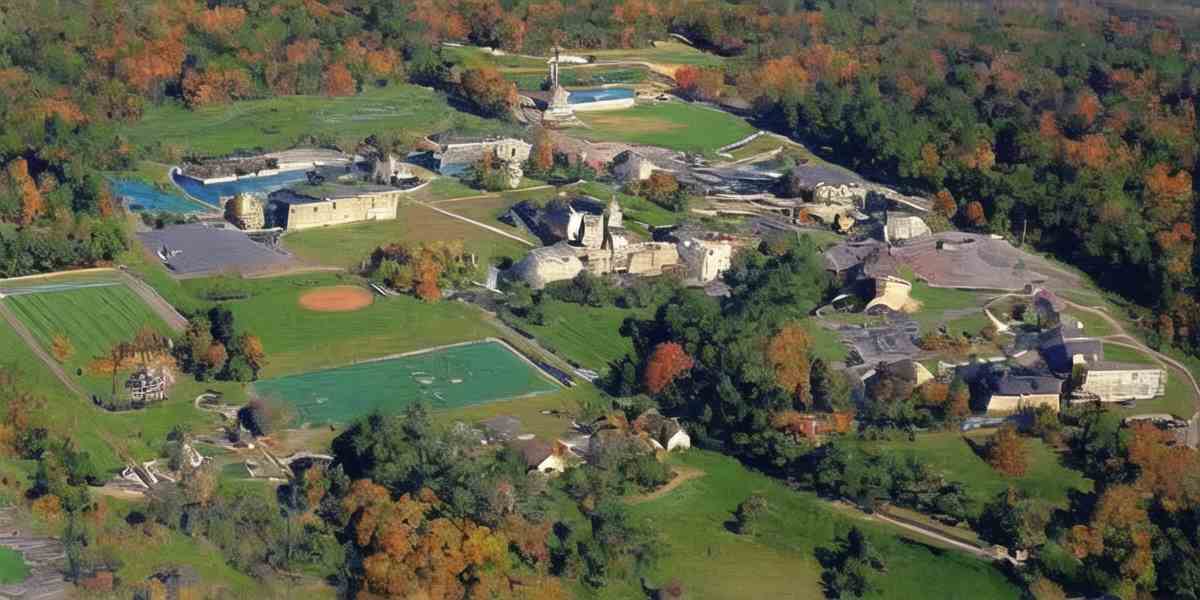Misericordia University
2024 USNews Best Colleges Ranking: 227(↓8) (Click for schools/majors ranking)
School Characteristics: Private, non-Profit (4-Years)
Calendar systerm: Semester
Religious Affiliation: Roman Catholic
School Chief: Daniel Myers (President)
Website: www.misericordia.edu/; Phone: 5706746400
Location: 301 Lake St, Dallas, PA, 18612-1098

Misericordia University Important Facts
Misericordia University Degrees and Majors
Misericordia University Ranking and Admission
Misericordia University Admission Score Requires
*Numbers at left represent SAT/ACT submitting percentage, numbers on blue blocks represent 25%-75% admission scores
**Drag green block to check data for different years, click blue block to check scores trends
Misericordia University Students Diversity
Misericordia University Students Age Distribution
Misericordia University International Students Trends
Misericordia University Campus and Safety
Nearby Top Colleges
Campus Safety
Reference
- Misericordia University Official Website
- USNews Best Colleges Ranking
- USNews Bset Global Universities Ranking
- THE World University Ranking
- QS World University Ranking
- ARWU World University Ranking
- US Department of Education College Scorecard
- National Center for Education Statistics
- Forward Pathway US College Ranking Database
 Misericordia University Important Facts Trends
Misericordia University Important Facts Trends
 Misericordia University degrees/majors
Misericordia University degrees/majors
Misericordia University major details
*Depends on whether majors have graduates in 2022 or not, Yes / No
**Move mouse on can check deitaled graudates number, click for major detailed information
***Due to privacy policy, graduate salaries are not shown for some majors that has few gradautes
| Major | Graduate Salary | Under | Master | Doctor |
|---|---|---|---|---|
| Health Services/Allied Health/Health Sciences, General. | $69,660 | |||
| Speech-Language Pathology/Pathologist. | $60,005 | |||
| Health/Health Care Administration/Management. | $61,872 | |||
| Medical Radiologic Technology/Science - Radiation Therapist. | $65,003-$115,033 | |||
| Diagnostic Medical Sonography/Sonographer and Ultrasound Technician. | $65,003-$115,033 | |||
| Physician Assistant. | $65,003-$115,033 | |||
| Allied Health Diagnostic, Intervention, and Treatment Professions, Other. | $65,003-$115,033 | |||
| Occupational Therapy/Therapist. | $68,614-$78,147 | |||
| Physical Therapy/Therapist. | $68,614-$78,147 | |||
| Medical/Health Humanities. | - | |||
| Registered Nursing/Registered Nurse. | $67,569-$106,659 | |||
| Nursing Practice. | $67,569-$106,659 |
| Major | Graduate Salary | Under | Master | Doctor |
|---|---|---|---|---|
| Business Administration and Management, General. | $51,383-$64,017 | |||
| Accounting. | $49,001 | |||
| Business, Management, Marketing, and Related Support Services, Other. | $48,279 |
| Major | Graduate Salary | Under | Master | Doctor |
|---|---|---|---|---|
| Education, General. | $58,921 | |||
| Early Childhood Education and Teaching. | $44,143 | |||
| English/Language Arts Teacher Education. | - | |||
| Mathematics Teacher Education. | - | |||
| Social Studies Teacher Education. | - |
| Major | Graduate Salary | Under | Master | Doctor |
|---|---|---|---|---|
| Social Sciences, General. | $38,824 | |||
| American Government and Politics (United States). | $37,556 |
| Major | Graduate Salary | Under | Master | Doctor |
|---|---|---|---|---|
| Psychology, General. | $57,109 |
| Major | Graduate Salary | Under | Master | Doctor |
|---|---|---|---|---|
| Communication, General. | - |
| Major | Graduate Salary | Under | Master | Doctor |
|---|---|---|---|---|
| Biology/Biological Sciences, General. | - | |||
| Biochemistry. | - |
| Major | Graduate Salary | Under | Master | Doctor |
|---|---|---|---|---|
| Sport and Fitness Administration/Management. | $36,815 |
| Major | Graduate Salary | Under | Master | Doctor |
|---|---|---|---|---|
| Social Work. | - |
| Major | Graduate Salary | Under | Master | Doctor |
|---|---|---|---|---|
| Computer and Information Sciences, General. | $60,508 | |||
| Information Technology. | $60,508 |
| Major | Graduate Salary | Under | Master | Doctor |
|---|---|---|---|---|
| General Studies. | $43,375 |
| Major | Graduate Salary | Under | Master | Doctor |
|---|---|---|---|---|
| Philosophy. | - |
| Major | Graduate Salary | Under | Master | Doctor |
|---|---|---|---|---|
| English Language and Literature, General. | - |
| Major | Graduate Salary | Under | Master | Doctor |
|---|---|---|---|---|
| History, General. | - |
| Major | Graduate Salary | Under | Master | Doctor |
|---|---|---|---|---|
| Mathematics and Statistics. | - |
| Major | Graduate Salary | Under | Master | Doctor |
|---|---|---|---|---|
| Chemistry, General. | - |
 Misericordia University Schools/Majors Ranking
Misericordia University Schools/Majors Ranking
Under Ranking (2024)
*Rankings have been updated to 2025USNews schools/majors ranking, rankings are for reference only
*numbers in bracket represent rankings change compare to last version
 Misericordia University Varsity Athletes
Misericordia University Varsity Athletes
| NCAA Division III with football | MEN | WOMEN |
|---|---|---|
| Track and Field and Cross Country (combined) | 60 | 106 |
| Football | 92 | - |
| Soccer | 31 | 24 |
| Lacrosse | 32 | 21 |
| Baseball | 45 | - |
| Basketball | 25 | 16 |
| Swimming | 15 | 23 |
| Volleyball | 13 | 18 |
| Softball | - | 23 |
| Field Hockey | - | 21 |
| Tennis | 7 | 11 |
| Golf | 9 | 6 |
| NCAA Division III with football | MEN | WOMEN |
|---|---|---|
| All Track Combined | 61 | 89 |
| Football | 73 | - |
| Soccer | 29 | 17 |
| Lacrosse | 24 | 21 |
| Baseball | 37 | - |
| Volleyball | 19 | 16 |
| Softball | - | 25 |
| Swimming | 9 | 16 |
| Tennis | 6 | 16 |
| Field Hockey | - | 21 |
| Golf | 9 | 8 |
| Basketball | - | 16 |
| NCAA Division III with football | MEN | WOMEN |
|---|---|---|
| All Track Combined | 69 | 109 |
| Football | 107 | - |
| Soccer | 35 | 31 |
| Lacrosse | 33 | 24 |
| Baseball | 43 | - |
| Basketball | 26 | 15 |
| Volleyball | 13 | 23 |
| Swimming | 13 | 18 |
| Field Hockey | - | 27 |
| Softball | - | 23 |
| Tennis | 8 | 12 |
| Golf | 11 | 6 |

 Misericordia University Important Facts Trends
Misericordia University Important Facts Trends
















































































































































































































































































































































































































































